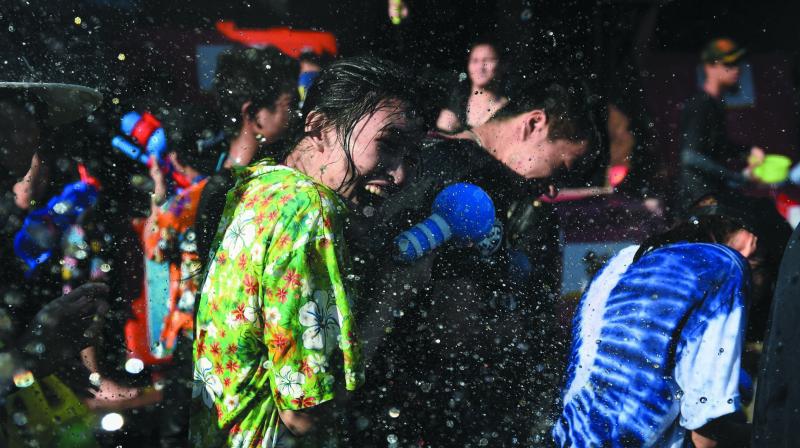THAILAND, April 19, 2017 (The Asian Age): Last week’s full moon, dubbed the “Pink Purnima” by a Indian bistro in Bangkok, marked the Vernal Equinox and New Year celebrations: Vilambi in Tamil Nadu, Vaisakhi in Punjab, Bikram Sambat in Kathmandu and Songkran, Thailand’s Holi. Public squares hosted water parties with live bands, overhead sprinklers, water cannons and buckets, which spared neither pedestrian nor motorist.
Songkran derives from the Sanskrit word Samkranti, “astrological passage,” which denotes transformation. Songkran evolved from India’s Makar Sankranti January harvest festival, which aligns with the Buddhist/Hindu solar calendar, thus Songkran is both an astrological passage and symbolic of the evolution of spiritual practice. Across Thailand water parties blend with ceremonial merit making: bathing Buddha images, honoring relics of ancestors, pouring water over senior relatives and monks. The Indian embassy invited Bangkok residents to pay special New Year homage by making floral offerings and pouring water on the nine Navagraha celestial Hindu deities enshrined at the National Museum’s Samranmukhamat Pavilion for the three-day holiday.
Throughout Thailand seeds of India are seen in language, astrology, ritual and art, fertilized in the rich soil of Thai magic and folklore, refined to perfection in the Ayutthayan period, still potent in the 21st century. The Mahabharata tells of how Brahma was cursed that his worship would die in India, and so it did, but Brahma now dwells in Thailand, alongside Lord Buddha. Every mall, bank, hotel and home has a shrine to Phra Phrom, Lord Brahma, whose four heads offer specific blessings and are daily worshipped with flowers, incense, fruits and candle flames. The rites and symbols of Siamese kingship evolved from ancient India, Thai government buildings are adorned with red Garudas, the emblem of the Chakri Dynasty, an 800-year-old lineage established in the 12th century by the Kingdom of Sukhothai.






